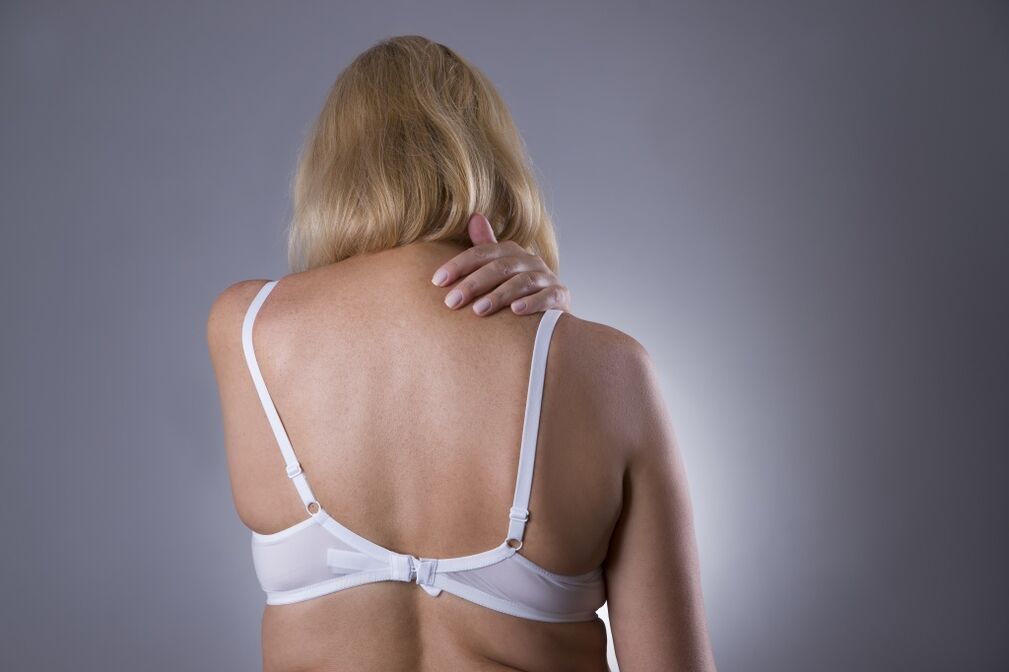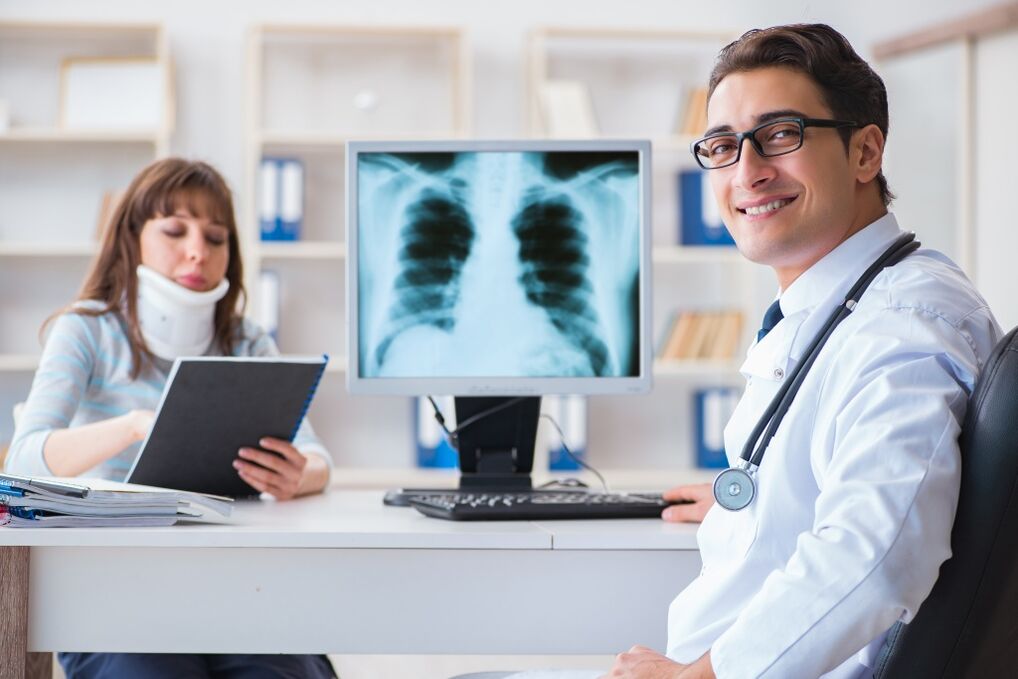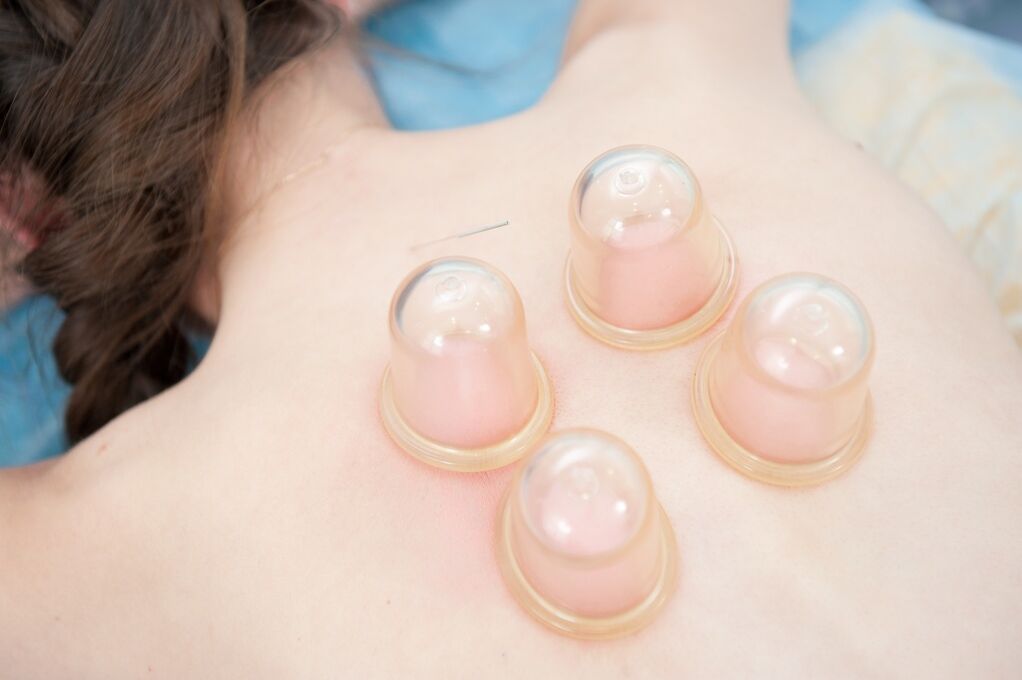
Osteochondrosis is a dystrophically deep disease, during which there is a violation of the structure and the function of the intervertebral discs.Osteochondrosis of the neck is damage to the cervical column.
During the pathological process with osteochondrosis of the neck of the intervertebral disc pulp (its central and soft part), losing its amortization properties.The cervical column loses flexibility, mobility, blood vessels and nerve endings are raped in the canals between the vertebrae.The particularity of this pathology is that its symptoms may resemble signs of other diseases, therefore, as a result of which the diagnosis of the disease is difficult and adequate treatment is prescribed too late when irreversible changes have already started in the cartilage fabric.
Cervical osteochondosis, whose symptoms and treatment will be described below, as well as cervical osteochondosis, are developing at the average and older age, earlier in men, and a little later in women, and in recent years, a significant "rejuvenation" of the osteochondosis of the neck has been noted.Of course, over the years, even in a healthy spine, the cartilage tissue of the intervertebral discs is replaced by fiber fibers over time, it is compacted and hardened.This process is natural, it leads to a decrease in the mobility of the spine, but by pain, as a rule, it is not accompanied, because the fiber processes do not affect nerve endings and do not cause counterfeiting.Unlike natural physiology, pathological changes in intervertebral discs, characteristics of osteochondrosis, propagate outside cartilage, which causes the compression of blood vessels and nerve endings, pain and vascular syndrome.
The causes of cervical osteochondosis
Partly in the development of osteochondrosis of the "culpable" neck, the upheaval of the modern person and the corresponding distribution of charges along the spine, as well as the natural processes of aging of the bodily tissue, in addition, there is a certain number of development and progression of this pathology:
- sedentary lifestyle;
- Long stay in the same position during work;
- excess body weight;
- In progress injuries of the spine in the neck;
- Chronic stress, constant nervous tension;
- Regular hypothermia of the muscles of the collar area (for example, when it is close to the air flow of the air conditioner);
- Congenital vertebral anomalies and intervertebral discs.
What is the dangerous osteochondrosis of the neck?
First of all, the osteochondrosis of the neck complicates a certain number of movements, makes them painful, putting its contribution to the patient's hypodynamics, which in itself is harmful.A vicious circle occurs: a small physical activity causes osteochondrosis, which makes the patient even less active physically, which in turn contributes to the progression of the disease.
In addition, in the canals along the vertebrae of the cervical region, the most important nervous plexus and the blood vessels are maintained, whose irritation and violation cause reflex headaches, chronic dizziness, the destabilization of blood pressure, which can make the patient incoherent, considerably reduce the quality of his life.
The special danger of neck osteochondrosis is in its difficult diagnosis and its high probability of inadequate, inadequate treatment.
Symptoms of cervical osteochondosis
The manifestations of cervical osteochondosis are exhausted, which considerably complicates the diagnosis.Consequently, the patient, as a rule, addresses the doctor even when the processes in the intervertebral joints were an irreversible character.The most important symptoms of neck osteochondrosis include:
- dizziness;
- headache;
- Net changes in blood pressure.
All the signs listed are non -specific, they can be indicated not only for cervical or cervical osteochondosis, but also for many other diseases.Therefore, it is very important for one of these symptoms to consult a doctor and to undergo a complete medical examination in order to discover the real cause of the disease.
In addition, Cervicalgia is characteristic of osteochondrosis of the neck or pain in the neck.It can either locate in the back, "in the depths" of the neck, and give it to the shoulder, the hand.The sudden start of a pain attack is characteristic - immediately after awakening, after sneezing or a cough, a laugh, a clear movement.The pain, as a rule, is moderate, is combined with a crunch in the cervical vertebrae when you try to turn your head, and if the process has not yet accepted an irreversible current, after a while, it sets alone.
In addition, it must be said about the fluctuations in blood pressure in cervical osteochondosis.This is a non -specific symptom, but there are certain signs that the connection of blood pressure jumps with osteochondosis can be established.Such a connection is characterized by fluctuations in blood pressure throughout the day.Long -term hypertension, on the contrary, is atypical for osteochondrosis.The cause of pressure fluctuations lies in the reflex reaction of nerve endings in the walls of blood vessels in response to their irritation and compression.As a rule, the Bond blood pressure of osteochondrosis is accompanied by headache, pain in the limbs, altered muscles and skin sensitivity in the collar area.
In addition, cervical osteochondosis is characterized by a number of syndromes (combinations of several symptoms):
- Vertebral - a certain number of symptoms associated with damage to bone tissue of the vertebrae (pain in the neck when you try to turn your head, violation of the mobility of the cervical column, morphological changes in vertebral bodies and intervertebral discs);
- Vail artery syndrome - a number of symptoms indicating the connection of the pathological process with the vertebral arteries.With an insufficient blood flow in the artery, when compressed, noise in the ears, dizziness, the skills of blood pressure, nausea to vomit, a feeling of superb.The irritation of nerve endings in the walls of the arteries manifests itself by migraines, the flicker of "flies in the eyes" and a temporary decrease in visual acuity.Oxygen famine of the brain fabric, which feeds the vertebral arteries, manifests itself by fainting, chronic drowsiness, a slight constant headache, a feeling of weakness, a decrease in the concentration of attention and performance.The syndrome is characteristic not only for osteochondrosis, but also for atherosclerosis and other pathologies of circulatory disorders in the vertebral arteries;
- Koreshka - It occurs due to the compression of the roots of vertebral nerves, a defeat to a factor is characteristic.Typical symptoms: pain, altered sensitivity, paresis and paralysis of the hands, face and neck;
- Heart - A number of symptoms that occur as a result of heart reflex disorders (pain, burning behind the sternum, shortness of breath, tachycardia).
The degree of neck osteochondrosis
The first degree - Characterizes the initial stage of the disease, manifested clinically by pain in the neck after sudden movements, sneezing.The pain is acute, resembles the discharge of the electric current.At the same time, damage to the capsule of the intervertebral disc are morphologically, which causes irritation of nerve endings.The pain in the neck can be accompanied by pain on the back of the head, the noise in the ears, flickering shutters before his eyes.
The second degree - The period of progression of the disease.At this stage, the pain in the neck becomes constant, there is a narrowing of the intervertebral holes and in this regard - the regular offense of the roots of the vertebral nerves and the vessels which take place there.The capsule of the intervertebral joint is thinner, the pathological mobility of the spine in this area occurs.Muscle atrophy.The fluctuation in blood pressure is characteristic.In a severe evolution of the disease, a "symptom of a falling head" may appear - the need to support the head with one hand to relieve the pain and repair it in a certain position.
The third degree It is characterized by the destruction of the fibrous ring of the intervertebral disc, following which the complications of osteochondrosis are possible: dislocations of the vertebrae, intervertebral hernies, curvature of the spine.The pain is intense, gives its hand to the shoulder, in addition to the pain in the neck is disturbed by headache, dizziness, sophisticated jumps in blood pressure, the patient loses a work capacity.
Diagnosis of cervical osteochondosis

The diagnosis of "neck osteochondrosis" is made on the basis of the patient's examination and study, the degree of morphological changes in the intervertebral discs helps to establish an X -ray examination and magnetic resonance imaging.In addition, it is important to exclude other diseases with similar symptoms: heart attack, hypertension, organic brain lesions, migraine, which requires consultations with related specialists.
Treatment of cervical column osteochondrosis
The volume of therapeutic measures for the osteochondrosis of the neck depends directly on the degree of the pathological process.The treatment will be the most effective than before the start, it is therefore particularly important to consult a doctor in a timely manner, with the first episodes of pain in the neck, dizziness, not hoping that painful symptoms will pass alone.
At the initial stage of the disease, the treatment of osteochondrosis of the cervical column is reduced to eliminate pain syndrome using NSAIDs and pain relievers from local (ointment, creams) or systemic (tablets, injections) action.In addition, the restoration of normal metabolic processes in the cartilaginous tissue of the intervertebral disc plays a huge role, for which chondroprotectors are used - drugs that stimulate metabolism in cartilage and normalization of its structure.Chondroprotectors stimulate production processes in the cartilage fabric of proteoglycans that form the structure of cartilage.At the same time, inflammation and destructive processes in cartilaginous tissues are deleted.
With the progression of the pathological process, adding to described therapy can be used as antipasmodics and muscle relaxants to eliminate muscle spasms.The doctor may recommend blocking novocaine to relieve pain, however, this method can be attributed exclusively to palliative, allowing the elimination of painful symptoms, but does not affect the course of the neck osteochondrosis.With advanced osteochondosis, surgical treatment can be the only effective remedy, as the possibilities of conservative treatment at this stage are exhausted.
The physiotherapeutic methods of treatment of osteochondosis have been well revealed: electrophoresis, magnetotherapy, ultrasonic therapy, mud.The traditionally important parts of the complex treatment of osteochondrosis are massage and manual therapy. It should be remembered that all the methods of physiotherapy should only be used if the osteochondosis of the neck is at the stage of remission, otherwise you cannot activate the pathological process.Any manipulation during massage should be as soft as possible.
It should be remembered that all the methods of physiotherapy should only be used if the osteochondosis of the neck is at the stage of remission, otherwise you cannot activate the pathological process.Any manipulation during massage should be as soft as possible.
Medical physical education (exercise therapy) with cervical osteochondrosis
An important role in the treatment of osteochondrosis is acquired by exercise therapy.The methods of physiotherapy exercise are different, however, their general essence is unchanged: careful restoration of the healthy mobility of the affected area of the spine and, associated with this stimulation of blood supply and the nutrition of the cartilage fabric.With the diagnosis of "cervical osteochondosis", the exercises should be as saving as possible, the load on the spine is minimal.Sudden turns, rotation movements, deep inclinations are unacceptable, which can contribute to damage to the intervertebral joint capsule and worsen the pathological process.
Prevention of cervical osteochondrosis
Cartilage is not restored, and it is therefore advisable to prevent its progress only to try to deal with the consequences.The basis of prevention of cervical osteochondosis is a healthy lifestyle, reasonable mobility, rational nutrition, body weight control, small gymnastics breaks with a sedentary professional activity.In addition, at the first signs of cervical column dysfunction, you should consult a doctor and if there are indications to start taking chondroprotectors that will help normalize metabolism in cartilage and considerably slow the progression of the disease.


















